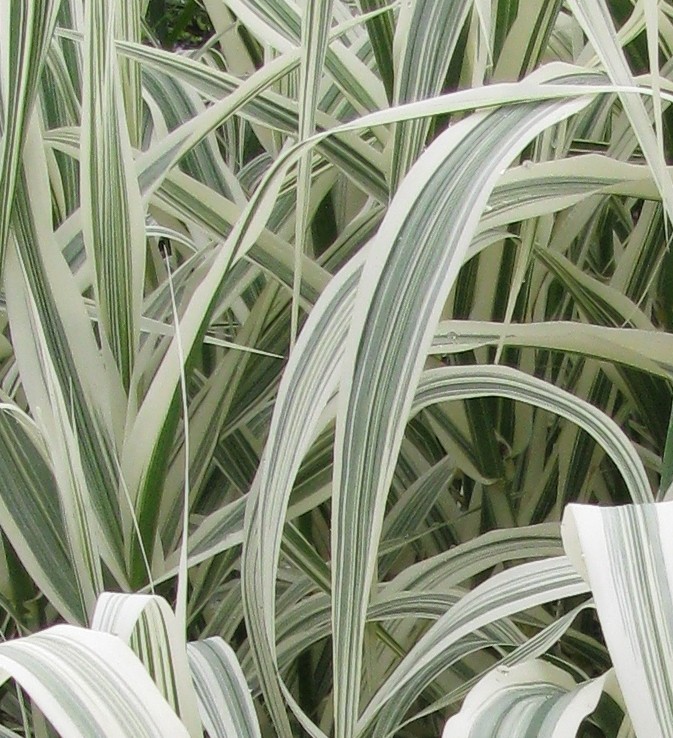 This warm season, clump-forming, perennial grass is a native of the Greater Middle East but is wide spread in both the Mediterranean area and United States where it is considered invasive in some states. It is a vigorous grower and tolerates a wide variety of soils including wet and moderately salines ones. The cane-like stems are hollow, about one fourth to two inches thick, and are similar to those of bamboo. The gray-green leaves are twelve to twenty-four inches long, about two inches wide, and may be erect or arching. In late summer, plants produce an upright, one to two feet long, feathery cream-colored plume that matures to purplish brown. In frost free areas the plant may grow 20’ tall and is evergreen but in other areas it turns brown in winter and should be cut down each year after the first frost. Because of it rapid growth rate giant reed has considerable potential for energy production. A variegated form is available that is especially attractive and adds a tropical look to the garden. The genus name, Arundo, is the Latin word meaning reed. The specific epithet, donax, is the Greek word meaning reed.
This warm season, clump-forming, perennial grass is a native of the Greater Middle East but is wide spread in both the Mediterranean area and United States where it is considered invasive in some states. It is a vigorous grower and tolerates a wide variety of soils including wet and moderately salines ones. The cane-like stems are hollow, about one fourth to two inches thick, and are similar to those of bamboo. The gray-green leaves are twelve to twenty-four inches long, about two inches wide, and may be erect or arching. In late summer, plants produce an upright, one to two feet long, feathery cream-colored plume that matures to purplish brown. In frost free areas the plant may grow 20’ tall and is evergreen but in other areas it turns brown in winter and should be cut down each year after the first frost. Because of it rapid growth rate giant reed has considerable potential for energy production. A variegated form is available that is especially attractive and adds a tropical look to the garden. The genus name, Arundo, is the Latin word meaning reed. The specific epithet, donax, is the Greek word meaning reed.
Type: Perennial, clump-forming grass
Bloom: 1-2 foot long feathery cream-colored plume in late summer, turning purplish brown with maturity
Size: 12-20’ H x 5-8’ W
Light: Full sun to partial shade
Soil: Tolerant of a wide variety of soils including sandy, clay, wet, and mildly saline
Care: Cut back after first frost

Hardiness: Zones 7-10 (6 with protection)
Pests and Diseases: None of significance
Propagation: Division
Companion Plants: Angel Trumpet, elephant ear, hibiscus
Outstanding Selections:
Arundo donax ‘Variegata’
- ‘Peppermint Stick’ (holds variegation well)
